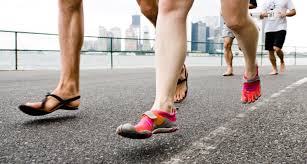
Discover the Benefits of Barefoot Shoes: Why Less is More for Your Feet
barefoot shoes, also known as minimalist shoes, have gained huge popularity in recent times for their unique design and alleged health benefits. These shoes aim to mimic the feeling of running or walking barefoot while providing some protection from the elements. This is a complete guide to everything you should learn concerning barefoot shoes.
What Are Barefoot Shoes?
Barefoot shoes are specifically designed to provide minimal interference with the natural movement that your feet make. Unlike conventional footwear they feature an extremely thin and flexible sole that allows for better sensory feedback from ground. The design typically features an expansive toe box that can accommodate natural toe splay, no or little heel-to-toe drop and a flexible design that permits the foot to move in a fluid manner. The goal is to promote the natural movement and foot movement.
Benefits of Barefoot Shoes
Increased Flexibility and Strength of the Foot by replicating the natural movements of walking barefoot the shoes aid in strengthening the muscles of your feet and lower legs. The increased strength could improve equilibrium and stabilization.
Improved Sensory Feedback: The the thin soles that come with barefoot shoes let you feel the ground more distinctly. The increased sensory feedback could increase proprioception (awareness of body position) which aids in coordination and balance.
Natural gait: Barefoot shoes promote the forefoot or midfoot strike pattern instead of the heel-first landing found in conventional shoes. This may reduce the risk of certain injuries associated with heel striking and promote the most efficient running technique.
Increased Comfort: Many users find barefoot shoes to be more comfortable because of their flexibility and the large toe box that allows for the natural spread of the toe.
Considerations and Potential Drawbacks
Transition Period: Moving into barefoot shoes in place of conventional footwear requires a gradual change. The muscles and tendons of your feet and legs may need time to adapt to the new demands. Starting with short periods of wear and gradually increasing will help to prevent injuries from overuse.
Not suited for all surfaces: While barefoot shoes offer great flexibility and a ground feel however, they aren’t sufficient protection against extremely rough or hazardous surfaces. It’s crucial to select the appropriate shoe based on the environment you are in.
Variable Experience: The advantages of barefoot shoes are different depending on the individual. Some people might notice significant improvements in comfort and performance however, others might feel less effective or uncomfortable.
Conclusion
Barefoot shoes present a compelling option for those looking to enhance their natural movements and the health of their feet. They offer a more intimate experience, they promote the strength of your feet, enhanced sensorimotor feedback and a more natural gait. It is important to transition gradually and consider your specific needs and environment. If you’re able to adapt, barefoot shoes can be an excellent supplement to your footwear collection.



